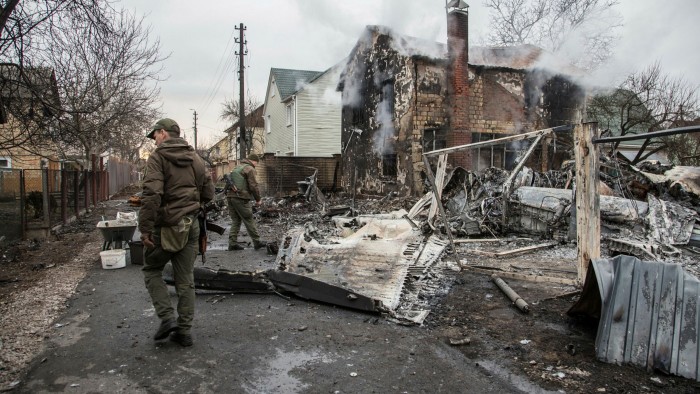Six factors to guide investors during Ukraine turmoil


Roula Khalaf, Editor of the FT, selects her favourite stories in this weekly newsletter.
The writer is president of Queens’ College, Cambridge, and an adviser to Allianz and Gramercy
Russia’s invasion of Ukraine has thrown policymakers, companies and markets into an inherently uncertain and unsettling world.
The temptation for investors is to try to figure out what will happen next on the ground and react accordingly — understandable but very difficult to get right given the multi-faceted forces that have been unleashed by the turmoil, and those that are yet to come.
The invasion not only has geopolitical, military and diplomatic repercussions but also economic, financial, social and institutional. They are felt across global, regional, national and individual levels. They are certain to interact with each other in variable ways that are hard to predict.
Rather than base portfolios on shaky specifications of inherently uncertain outcomes, a better approach could well be to formulate more flexible responses based on the following six factors.
First, even up to the eve of the invasion, many viewed what is happening today as highly unlikely. Few had a playbook prepared, and even fewer were sufficiently “self-insured” against the direct effects and negative spillovers.
Second, we are early in the process — such large-scale military events are hard to reverse quickly. Even if this were possible, there is still a series of additional sanctions and counter-sanctions in the pipeline. And it would be naive to dismiss the possibility of other authoritarian regimes trying to exploit a situation in which the west is scrambling to respond.
Third, just like their military counterparts, economic policymakers in the west lack the traditional flexibility to respond to the crisis, including the typical first movers in the central banking community. It is extremely rare for the Federal Reserve and the European Central Bank to start confronting a major new crisis with interest rates floored at or below zero and with central bank balance sheets already so bloated. In such a situation, “break the glass” emergency measures risk a much higher probability of collateral damage, unintended consequences, and more limited effectiveness.
Fourth, while the hardest hit are those countries and companies with direct links to Russia and Ukraine, the economic effects are much broader.
Stagflationary economic forces have already been released. The vast majority of countries and companies around the world are likely to experience some fall in demand and higher input costs.
Fifth, this comes at a time when inflation is already a problem, risking a further de-anchoring of inflationary expectations, especially with the world’s most powerful and influential central bank, the Federal Reserve, already behind the curve in dealing with rising prices. Having repeatedly failed to exploit orderly policy windows, it no longer has “first best” responses available.
Finally, flows and liquidity are added complexities for investors. Much of what happens in financial markets over the next few days is a function of the flows of funds, the depth of liquidity and the strength of the conditioning of investors to “buy the dip”.
This increases the scope for intraday volatility and contagion whereby even the most solid companies are temporarily trading with unusually high correlation to the market as a whole. The most interesting tug of war will play out between, on the one hand, “pain trades” that force the sale of securities regardless of market conditions and, on the other, those buyers seeking to exploit what they regard as a rapidly reversible drawdown in market pricing.
As initial conditions inevitably differ from country to country, from company to company, and from investor to investor, the specific implications of these six factors will differ in individual cases. For example, they will entail “do nothing” for some while others will need to scramble to realign suddenly unbalanced portfolios.
What will be common, however, is the importance of financial resilience that allows investors to retain as much optionality as possible for the time being. Rather than reflecting indecisiveness, it is an important recognition of an extremely uncertain situation that is some distance from resolution. Eventually, the time will come for such optionality to give way to the need to focus on the attractive new possibilities to reposition portfolios as developments on the ground become a lot less unpredictable.
Comments